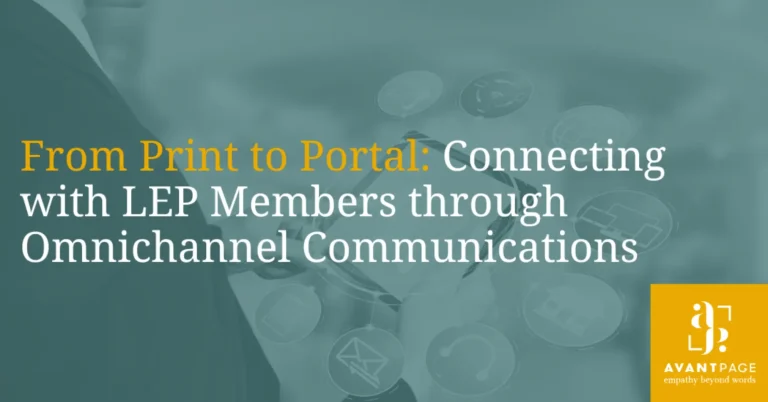The Importance of Preserving Endangered Languages
Preserving endangered languages is a mission-critical task for linguistic and translation professionals worldwide. Beyond the historical implications of protecting indigenous languages, it’s also important to safeguard the native tongue of global cultures for individuals who currently speak the language.
Let’s take a look at what’s involved in preserving languages and what it means for the translation industry as a whole.
Table of Contents
Benefits of Preserving Endangered Languages
1. Provides Equal Access to Critical Resources
2. Languages Teach Us About Culture and History
Examples of At-Risk and Endangered Languages
How the Translation Industry Can Help
What You Can Do to Help Preserve Endangered Languages
Frequently Asked Questions About Endangered Languages
Improve Your Organization’s Linguistic Diversity with Avantpage
Benefits of Preserving Endangered Languages
Preserving endangered languages offers far-reaching benefits that go beyond communication. Each language carries cultural identity, ancestral knowledge, and access to essential resources for those who speak it. By protecting and revitalizing these languages, we strengthen communities, promote inclusivity, and ensure that future generations can continue to learn from the wisdom embedded in every word.
1. Provides Equal Access to Critical Resources
As languages grow closer to becoming extinct, the circle of people who speak them grows smaller. However, whether the language is as common as Italian or as rare as Pitkern, existing speakers still need access to translation resources.
Efforts to preserve endangered languages help translators provide services to people in communities where their native language is not primarily spoken. Through crowdsourced or direct translation projects, speakers of endangered languages can access community resources like healthcare, education services, and other necessities that directly impact their quality of life.
According to UNESCO, more than 40% of the world’s estimated 7,000 languages are endangered, and one language disappears roughly every two weeks. When a language dies, entire communities risk losing not only their ability to communicate but also their connection to ancestral knowledge, stories, and cultural identity.
This makes translation professionals key advocates for linguistic equity. By helping to translate documents, signage, and resources into lesser-spoken languages, they ensure that speakers of endangered languages are not excluded from essential systems of care and communication.
2. Languages Teach Us About Culture and History
Human language is a fluid, ever-changing form of communication. Its content and structure change over time to reflect the culture of its native speakers and hold clues to its history.
Naturally, one of the biggest benefits of the preservation of endangered languages is the impact it has on the understanding of how languages grow and develop. Since communication is a fundamental part of human interaction, the study of indigenous languages offers limitless insight into humanity itself.
“Every language has poetry,” says Bob Holman, host of PBS program Language Matters. “Each [one] holds a little piece of information or a lot of information, can hold information about medicines and health, can hold information about the constellations in the sky. And that’s information that, if you lose the language, you lose that connection with that place, with that way of thinking, with tens of thousands of years of that language’s lineage.”
As with any avenue of historical study, researching a language’s past can provide clues to its future. Endangered languages are particularly vulnerable, so it’s important to learn all we can from them before they go extinct.
Beyond history, every language represents a unique worldview. For example, the Hawaiian and Māori language revitalization movements show how reconnecting with native tongues strengthens cultural identity and community pride. In both regions, immersion schools and media programs have helped new generations become fluent speakers, proving that with support and documentation, even highly endangered languages can be brought back to life.
Why Language Loss Matters
When a language disappears, humanity loses more than just words — we lose access to generations of collective wisdom. Many endangered languages contain ecological, agricultural, or medicinal knowledge specific to the lands where they developed. Without these languages, valuable information about sustainable living, environmental balance, and local biodiversity may be lost forever.
Language loss also has deep social implications. Communities that can no longer use their mother tongue often face barriers to education, healthcare, and civic participation. Preserving endangered languages supports inclusivity, empowerment, and human dignity — values that align closely with Avantpage’s mission to ensure everyone has equal access to information, regardless of the language they speak.
Examples of At-Risk and Endangered Languages
| Language | Historical Roots / Language Family | Where It’s Spoken Now | *Approx. Number of Speakers ~10 Years Ago | *Approx. Number of Speakers Today |
|---|---|---|---|---|
| Navajo (Diné Bizaad) | Athabaskan branch of the Na-Dené language family; Indigenous to the southwestern U.S. | Primarily the Navajo Nation across Arizona, New Mexico, Utah, plus communities elsewhere in the U.S. | Around ~166,800U.S. speakers in 2013 (age 5+) speaking Navajo at home. | About 161,174 U.S. speakers in 2021 (age 5+) speaking Navajo at home. |
| Hmong | Part of the Hmong-Mien (Miao-Yao) language family; originally from southern China / uplands and migrated into Southeast Asia and beyond. | China, Vietnam, Laos, Thailand, Myanmar; plus diaspora communities (U.S., France, Australia, etc.) | In the U.S. alone, approximately 260,000people identifying as Hmong (alone) in 2010. | In the U.S., approximately 330,000 people identified as Hmong alone in 2023. Globally, estimates of Hmong-Mien speakers number approximately 10 million, although exact numbers vary. |
| Danau (Htanaw, Danaw) | Austroasiatic family, Palaungic branch; its divergence makes it especially unique among that group. | Myanmar (Burma), specifically in a few villages in Shan State near Aungban, Kalaw Township. | In 2000, the ethnic group size was approximately 5,000. | About 3,000 speakers in 2023. |
| Ayapa Zoque (Ayapaneco / Tabasco Zoque) | Zoquean branch (Mix-e-Zoquean family), indigenous to Tabasco / southern Mexico. | Ayapa village, Jalpa de Méndez, Tabasco, Mexico. | Not many reliable older statistics, but as recently as ~2010 there were very few speakers (often reported < 20). | Approximately 15 speakers (aged ~67-90) as of the latest reports. |
| Karuk | Language isolate (or sometimes grouped as part of Hokan hypothesis); traditional to northwest California. | Northwestern California, among the Karuk people. | In 2000-2010 era, perhaps slightly more than a dozen or so fluent speakers; specific older counts are scarce. | Around 12 fluent native speakers (as of ~2007 for documented fluent speakers), with others learning or revitalizing, but the number remains very low. |
How the Translation Industry Can Help
The translation and localization industry plays a critical role in language preservation. Translators, linguists, and language service providers are uniquely positioned to:
- Document endangered languages through written, audio, or digital archives.
- Collaborate with nonprofits, universities, and Indigenous organizations to record oral histories and create learning materials.
- Leverage technology — including AI, machine learning, and digital dictionaries — to build linguistic databases for rare or low-resource languages.
- Advocate for language access in government and healthcare systems to protect linguistic rights for all speakers.
What You Can Do to Help Preserve Endangered Languages
Anyone can contribute to language preservation, whether by volunteering time to translate documents, supporting local revitalization projects, or simply learning and using endangered languages in daily life. Translators and global businesses can also partner with preservation organizations to ensure that Indigenous voices remain heard and respected in the digital era.
Organizations like The Enduring Voices Project and the Endangered Language Project are making great strides in language preservation. However, the continued globalization of the internet is positively impacting efforts as well.
“While the dispersal of speech communities across the globe has led to the demise of some languages, technology popularized by globalization is playing an equally important role in their revitalization. Through the internet and mobile communications, people are reconnecting with fellow speakers using digital tools to revive languages on the endangered list,” writes Yale linguistics expert Mark Turin.
UNESCO’s Atlas of the World’s Languages in Danger lists 576 languages as critically endangered, but thousands more are threatened. The translation industry needs to support measures that slow down or mitigate the loss of an important part of global cultures. Equally, businesses that provide resources to individuals with limited English proficiency must do what they can to help lessen the impact of languages that may be lost forever.
Frequently Asked Questions About Endangered Languages
What are endangered languages?
Endangered languages are languages at risk of falling out of use because their speakers are shifting to a dominant language or because intergenerational transmission is declining. When a language loses its youngest speakers and relies only on older generations, it faces a high risk of extinction. Preservation efforts are critical for maintaining language diversity and protecting human history embedded in linguistic traditions.
Why is language documentation important?
Language documentation preserves the grammar, vocabulary, and cultural knowledge of a language before it disappears. Organizations like the Endangered Languages Project and resources like Ethnologue compile detailed data on language use, language vitality, and speaker populations. Documentation ensures that languages can be studied, revitalized, and used to support human rights, including the right to cultural and linguistic expression.
How many endangered languages exist today?
The number of endangered languages worldwide is estimated at over 2,500, though some sources suggest up to 3,000. Certain regions, like Papua New Guinea, are particularly linguistically diverse, with hundreds of small language communities at risk. Other countries, such as Canada, also report multiple endangered Indigenous languages. Organizations like the United Nations and national governments work to support these communities and track language endangerment.
Who speaks endangered languages?
Speakers often include both older generations and younger speakers, though in many cases, the youngest members of a language community may not be fluent. Revitalization efforts aim to pass languages to the youngest speakers, maintaining language vitality and ensuring that knowledge tied to the language is not lost.
How does losing a language impact human history and culture?
Languages carry unique knowledge about human history, including local traditions, human rights norms, ecological practices, medicine, and social customs. When a language disappears, this cultural heritage vanishes. Protecting endangered languages helps preserve both cultural identity and valuable historical insights for researchers and global communities, from New York to remote villages worldwide.
What can individuals and organizations do to help?
– Support language documentation projects and the Endangered Languages Project.
– Collaborate with linguists to record, transcribe, and archive languages.
– Promote language diversity in education, media, and digital platforms.
– Provide resources to language communities to maintain language vitality.
– Recognize that access to one’s native language is a human rights issue.
How do global organizations support the world’s endangered languages?
The United Nations and UNESCO maintain initiatives to track language endangerment, fund revitalization programs, and promote human rights related to cultural and linguistic identity. Urban centers like New York also host workshops, language classes, and community gatherings to support immigrant and Indigenous language communities.
Improve Your Organization’s Linguistic Diversity with Avantpage
At Avantpage, we believe that linguistic diversity is essential to cultural understanding and inclusion. Every language represents a living story. By supporting translation, education, and revitalization efforts, we help those stories continue to be told. If you’re ready to expand your language access program, use one of our online forms to reach out or call (530) 750-2040.


